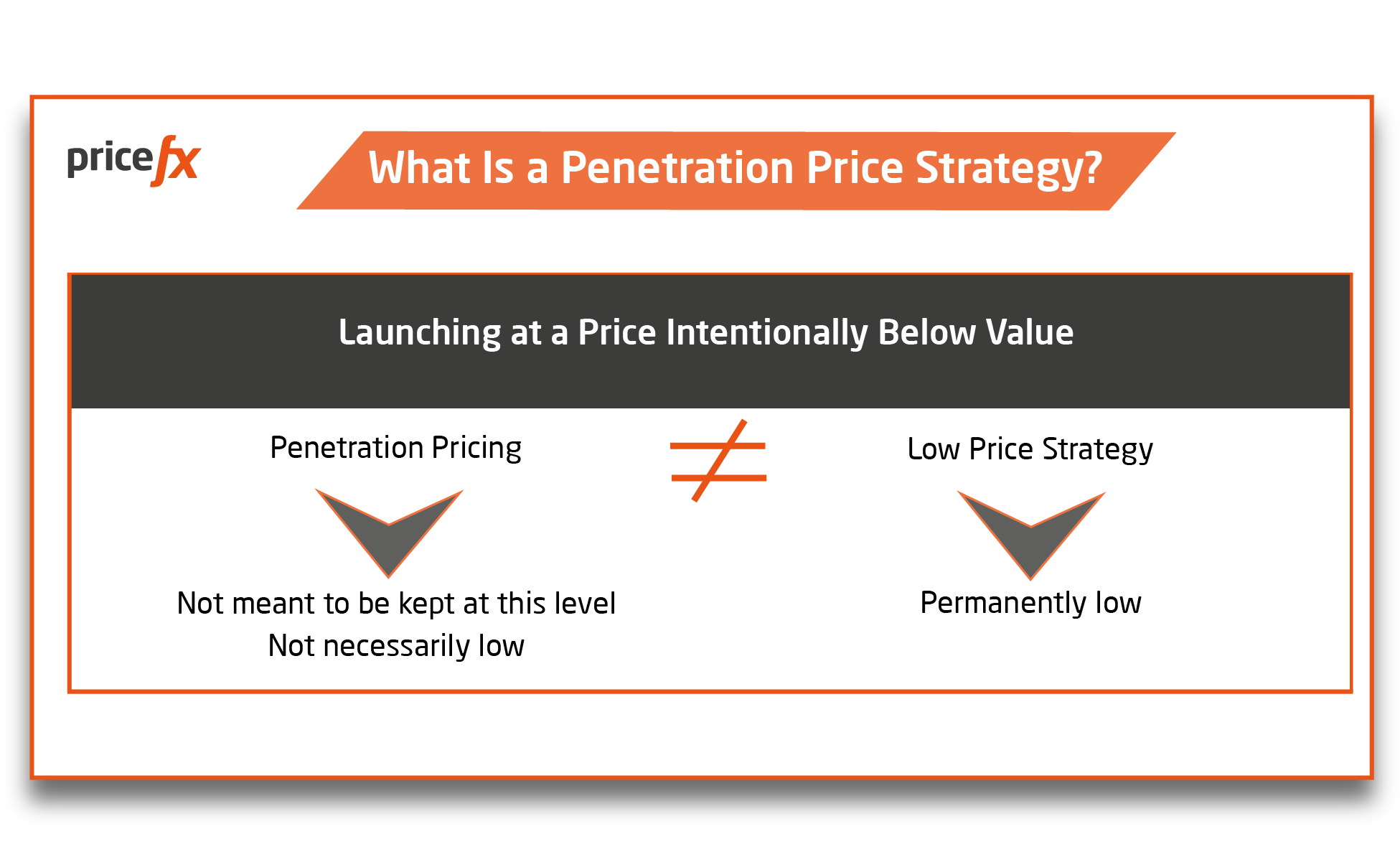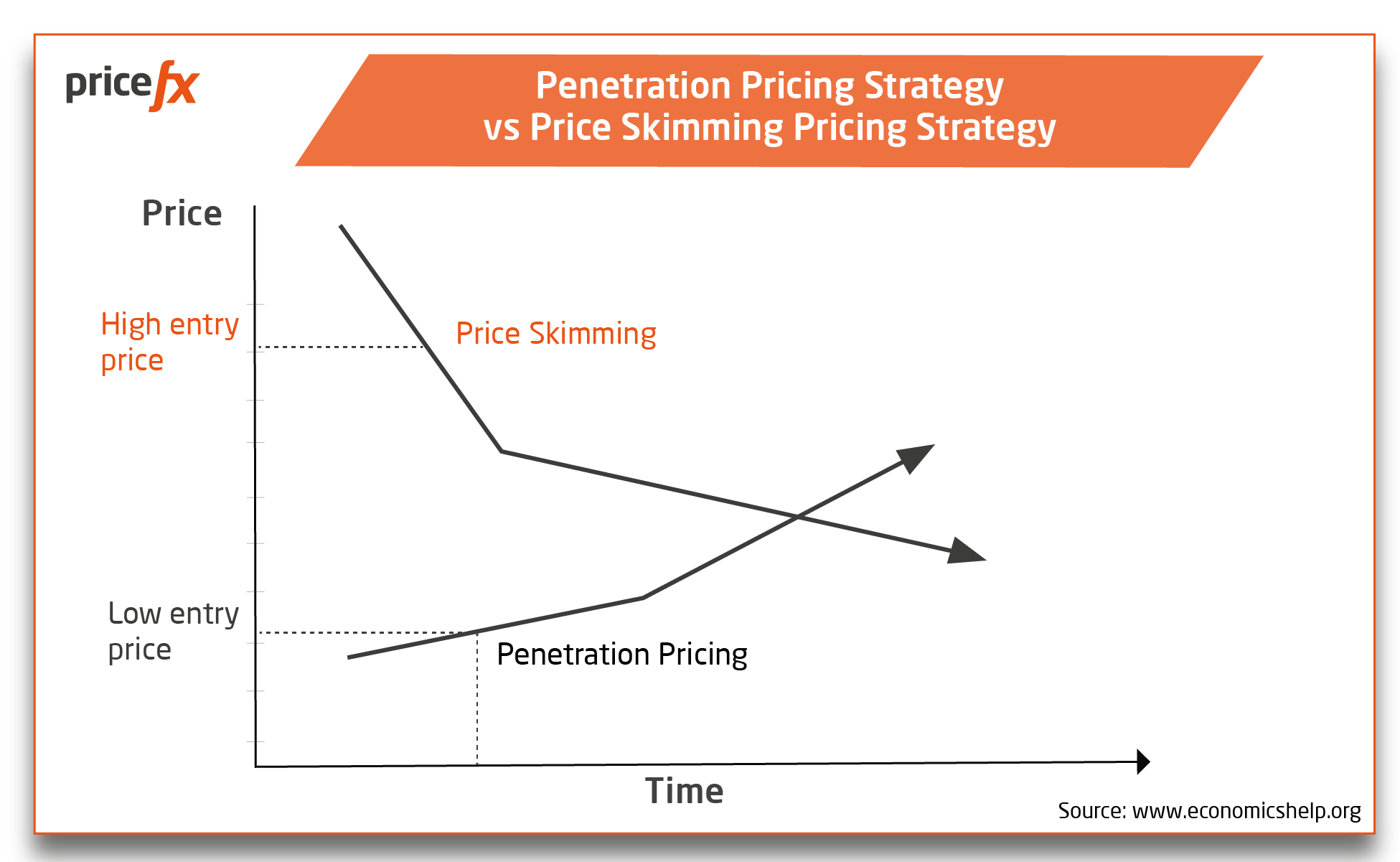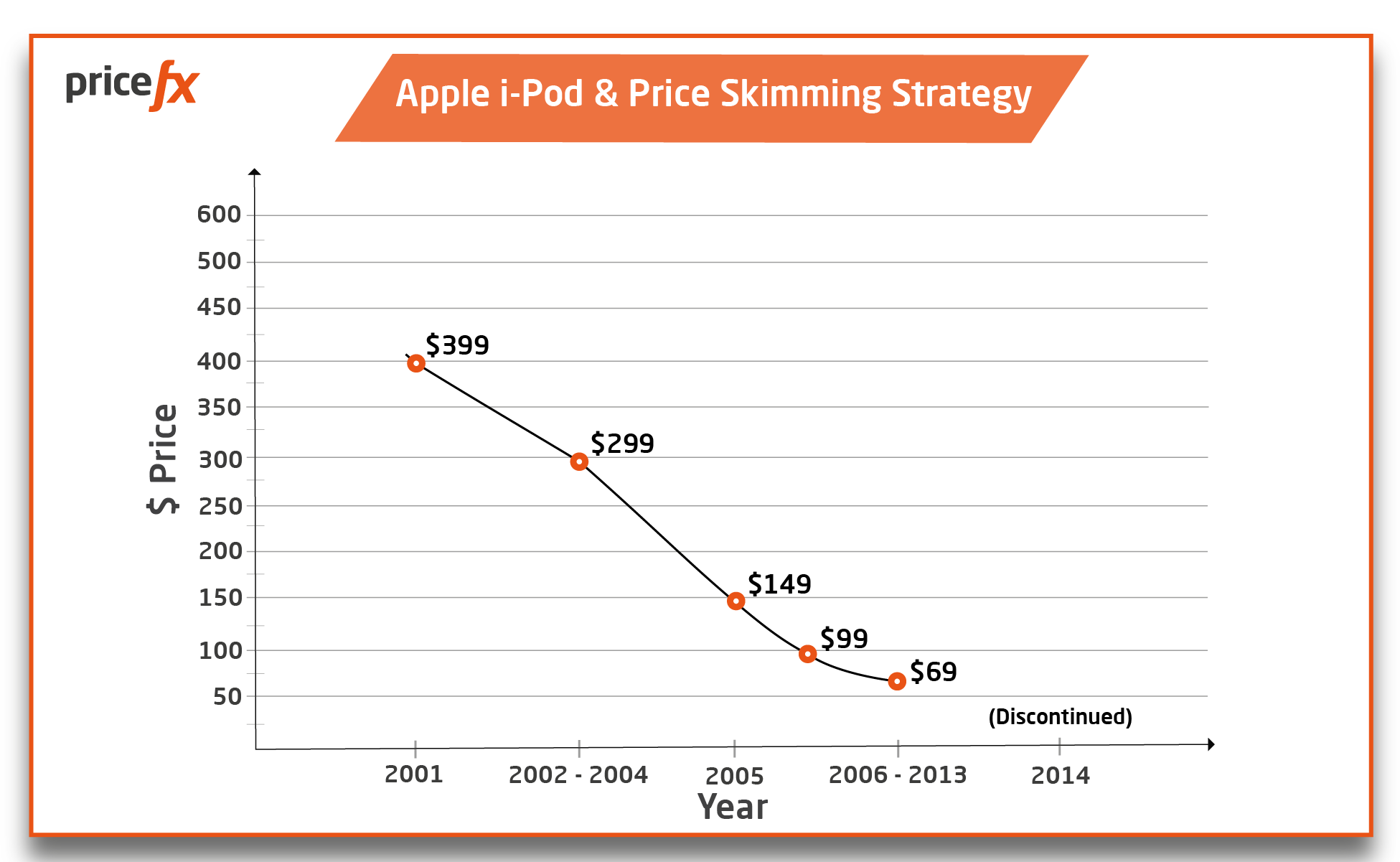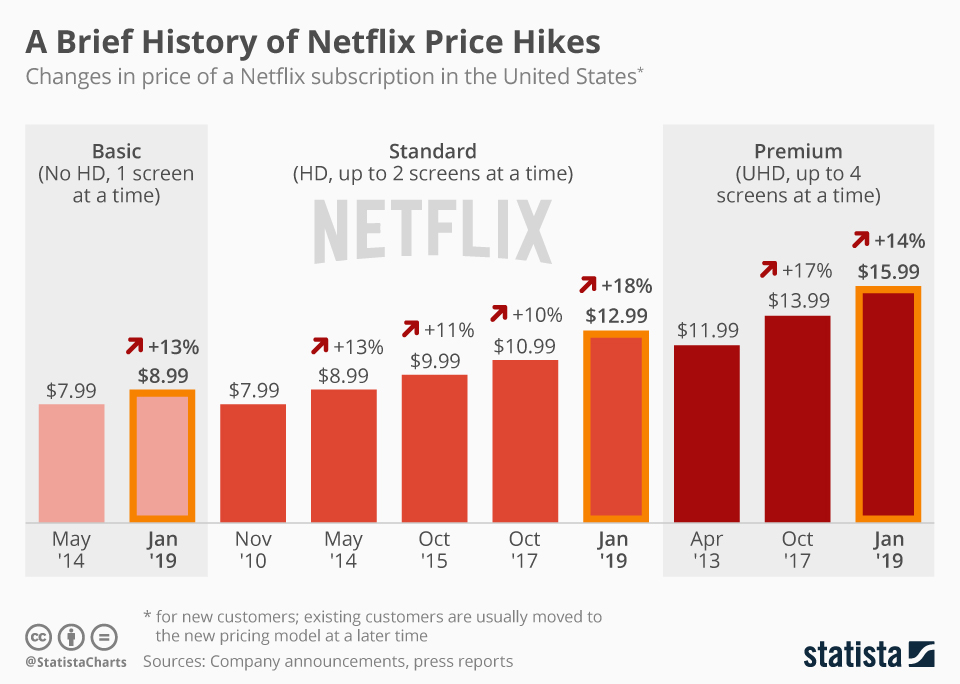Penetration Pricing Strategy – Pros, Cons, Examples & Tips
May 17th, 2022 (Updated 03/10/2023) | 13 min. read
By Idrissa Diop
Even if you have never heard the exact phrase “penetration pricing strategy” before, the chances are you have seen the pricing strategy in action. Unless you have been castaway on a deserted island the last few years, you have probably seen any number of new internet or cable providers come newly into the market either offering low introductory offers, free streaming services, or extra channels to draw in new subscribers. That is penetration pricing strategy in a nutshell. Penetration Pricing Strategy, by definition, is simply a pricing strategy that is used by new companies to quickly gain market share by setting an initially low price to entice customers to purchase their products. Chances are if you are a new player in your chosen industry, you may also be considering a penetration pricing strategy to make yourself known to the marketplace too. But before you do, check out Pricefx’s penetration pricing strategy guide to get all the nitty gritty details explained.
Over the last decade, at Pricefx we have put our price optimization technology to use to assist hundreds of clients globally in building more profit and make their companies more streamlined. In doing so, we have helped those organizations to put a pricing strategy in place that best suits their business and what they are trying to achieve.
And that is the critical piece of the pricing strategy puzzle – first up, you must determine your business goals. Only then can you select a pricing strategy or combination of strategies that will help you meet your customized objectives—from obtaining market share, clearing outdated inventory, maximizing profits or any of these in combination.
Let’s jump in and check if a penetration pricing model is a good fit for your business and analyze precisely what a penetration pricing strategy is. We will continue by comparing the penetration pricing with its close relative, price skimming pricing strategy, look at a famous penetration pricing strategy example, its pros and cons, and tips that should help you decide if it is right for your business.
What is a Penetration Pricing Strategy? – The Definition
The penetration pricing strategy is most often employed to attract a large volume of buyers by setting the prices of products or services at a lower price than competitors. The penetration pricing strategy is the opposite of the price skimming strategy. Instead of starting high and slowly lowering prices, you instead look to undercut your competitors on price in the beginning and gradually increase your prices.
While the pricing strategy can be extremely useful in increasing market share in the short term, it is worth keeping in mind that many new businesses who decide on a penetration pricing strategy experience can potentially experience an initial income drop that can be difficult to bounce back from (we will discuss this idea further in the cons section below).
However, sticking with the positives, when used well, a penetration pricing strategy helps a business successfully penetrate the market with their low prices. As a result, they will be able to grow and expand their brand and market share to attain higher profitability to make up for any possible early setbacks.

Using this strategy to set your products at low prices to increase your market share;
- Encourages in the trial of new products
- Increases sales volume
- Limits profit margin
However, after a period of increased sales growth, the business typically raises prices to increase profits and reflect the product’s rising value.
There are several factors that you must consider before deciding if penetration pricing is the right pricing strategy for your business. However, to understand precisely how penetration pricing works, it helps to compare it against its closest pricing strategy relative that it is often confused with.
Penetration Pricing Strategy vs Price Skimming Pricing Strategy

The penetration pricing strategy is often confused with the price skimming strategy, but the two differ in very clear-cut ways.
Price skimming is used to gradually skim the “cream” from the top of the market. The most famous exponent of the price skimming pricing strategy is Apple. Using the strategy, Apple sets their prices high to maximize profits in the short term and targets the customers most interested in their newly released I-Phone or I-Pad models. The most profitable sales are made early in the product’s life cycle, because early and eager buyers are willing to pay more for the newly released models. Over time, the price is steadily reduced to attract customers on a budget, who are happy to buy the once high valued product for a “bargain.”

Netflix Pricing Strategy – Penetration Pricing in Action
In contrast, a penetration pricing strategy means you offer a low price to attract many customers. Of all examples, the Netflix Pricing Strategy is the most well-known of penetration pricing examples. Netflix made classic use of the strategy, by rapidly penetrating the streaming market with low subscription costs and building up a loyal customer base. The high volume of Netflix subscription uptake compensated for the thin subscription margins. By winning many customers early in the battle for subscription streaming uptakes, Netflix found themselves better positioned to maximize customer lifetime value from future sales and upsells, and gradually increased subscription prices over time.

Original image source
What’s more, Netflix also operates a type of ‘packaging penetration’ to break their streaming service into the consciousness of new users and customers. What that means is that Netflix is often bundled into plans for free or discounted rates with internet providers, phone plans, or even in combination with other streaming services.
The most important part of this type of ‘packaging penetration’ to increase customers’ brand awareness is to either directly or indirectly communicate that the free or discounted offer is temporary and will increase in the future. This kind of communication and overall transparency is critical to establishing customer trust and using the penetration strategy again for more of your products and services.
Huawei Pricing Strategy
You also may have noticed Chinese smartphone companies implementing this form of packaging penetration to enter their products into a crowded smartphone market. A critical part of the Huawei Pricing Strategy in Europe has been to offer their phones for free or highly discounted rates, and over time Huawei increases their prices as customer awareness of the quality of Huawei phones also increases.
The understanding of knowing when and how prices will increase is a critical part of the penetration pricing strategy implementation puzzle (which we will discuss in further detail later in this article).
Why the Penetration Pricing Strategy Works for Some Businesses Better Than Others
Many companies, particularly Silicon Valley start-ups , fail with a penetration pricing strategy. From a long-term profit standpoint, it is risky. Your business needs to be able to survive the low-price, small profit margin introductory period to follow through onto the future price increases planned where you hope to increase your margins.
What’s more, some companies may have production capacity constraints during the introductory launch phase and only target mass production in the future. That said, when the low introductory price translates into significantly higher volume or a larger number of customers (high price elasticity), penetration pricing can work.
Situations where penetration pricing works at its best:
- When little product differentiation is present
- When demand for your products is price-elastic
- Where your products are suitable for a mass market (and, therefore, you can utilize and take advantage of economies of scale in production)
Having said that, it does not need to be an all-or-nothing decision between penetration pricing and a price skimming strategy. Some companies choose to take a hybrid pricing strategy approach, where some products are priced for market penetration, and others have high low pricing, competitive pricing or even other strategies applied. Pricing software will help your business to co-ordinate developing a hybrid pricing strategy approach, which we will discuss later in this article.
Android Pricing Strategy – Another Famous Penetration Pricing Strategy Example

In addition to the Netflix Pricing Strategy, another famous implementation of the penetration pricing strategy is the Android Pricing Strategy. Developed as an antithesis to the Apple Pricing Strategy, Android aims for greater market penetration with its penetration pricing. Android phones are regularly available at heavy introductory discounts, in the hope that consumers will become loyal to the Android brand. This strategy aims to open a wider range of consumers up to Android phone models, while Apple famously embraces a price skimming strategy, providing high-cost products that skim a small market share off the top at high profit margins.
Directly opposed to the Apple high profit margin pricing model, the aim, of course, is for Android to sell large volumes of its phones at healthy discounts/small profit margins and make up its profit that way.
Another use in the same ‘family’ of penetration pricing strategies is popular among smartphone providers. Providers often offer cheap or free smartphones in return for long-term calling and internet contracts with customers. The strategy is based on the hope that customers become excited about their cheap phone and fail to notice the inflated contract costs.
The Pros & Cons of Penetration Pricing Strategy
The Pros of a Penetration Pricing Strategy
Consider these advantages when you are thinking whether you should implement a penetration pricing strategy to give your business a sales, volume, or profit bump;
- Creates positive branding: The penetration pricing strategy may assist your business in developing a positive brand with your customers. Many customers may see your company in a positive light as offering your products at lower prices will show that you understand their price pains.
- Market share Increase: By luring new customers away from competitors, your business may increase market share and boost your overall market position.
- Empower Your Cost Control: If your business chooses to implement a penetration pricing strategy, as a natural biproduct you will become acutely aware of your pricing and expenditure, allowing for better control of your costs.
- Develop Customer Loyalty: Offering high-quality products at a low price can attract a lot of happy and contented customers. Your customers may develop a taste and liking for your products as they are priced lower than your competitors. What this means is that even when your price rises again, your customers may be more likely to continue buying your product instead of switching to the competition.
- Assists your business to introduce new products: If your business is looking to introduce a new product, using a penetration pricing strategy can help you to establish your product in the marketplace and gain new and loyal customers.
- Customer buy-in to your company’s upsells or cross-selling: When you attract customers to your lower-priced products, they may also be attracted to, and be more likely to purchase your other regular-priced products that have higher profit margins.
- High inventory turnover: A penetration pricing strategy can increase your company’s inventory turnover rate. That may lead to better relationships with your vertical supply chain partners, such as retailers and distributors, which can only benefit your business overall.
The Cons of Penetration Pricing Strategy
There are also drawbacks to using a penetration pricing strategy over the short-term and long-term. Let’s run through the disadvantages;
- Less customer loyalty: Penetration pricing can sometimes include the risk of dealing with frequent customer turnover and develop a core customer group of “brand switchers.” They are consumers that may turn up as customers for your bargains and instantly leave once prices increase. Carefully announcing and implementing price rises may mitigate this outcome, although there will always be a core group of ‘switchers’ looking for a deal.
- Damage to your brand reputation: On the other hand, some fickle customers may view your ultra-low prices and generous introductory offers with suspicion. If you’re considering the long-term adoption of the penetration pricing strategy, your business may need to do some brand image ‘damage control’ from negative assumptions about the quality of your products.
- Narrow margins: Low pricing with a penetration pricing strategy can put pressure on your margins. Narrow margins can result in less money being available to cover the operating costs of the business, including marketing expenses. Not being able to spend as much on your marketing as your competitors do may result in the company growing slower. Business owners will need to follow through on planned price increases if they’re going to become profitable in the long term with the penetration pricing strategy.
- Price war: Yikes! A price penetration strategy can possibly trigger a price war. While penetration pricing may catch other market players off guard, it could also cause them to simply lower their prices. Competing with established companies for market share in a protracted “price war” could be challenging for a new business.
How to Decide if a Penetration Pricing Strategy is Right for You
So, how can you decide if a penetration pricing strategy is right for your business? Here are a few tell-tale signs to watch out for;
You Are Looking to build Customer Goodwill, and Stand Apart from Your Competitors
Starting with an inexpensive introductory price, new companies can build goodwill with many prospects and customers, while setting themselves up as different and a more viable customer option than their competitors.
You Can Afford a Penetration Pricing Strategy
As a large multinational or national company, you have the capital and/or resources to afford to take the potential risk to run at a loss for a limited period when using penetration pricing to break your new products into the marketplace.
Your Products Suit A Penetration Pricing Strategy
A penetration pricing strategy is more of an effective and desirable strategy for those types of products where the price is a key factor and the demand is price elastic such as food, phones and other mobile devices and gadgets, any product using a subscription pricing method, and internet and telecommunication services.
On the other hand, a penetration pricing strategy could be a disadvantage and even potentially damaging to a product (such as high-end fashion and premium branded sports shoes for example) where brand image and perceived quality are more critical. Selling a new brand of sports shoe at a low price might be perceived as low quality by your customers.
You Have a System or Strategy to Increase Your Prices Over Time
Usually, those companies that experience the most success with a penetration pricing strategy only use it over a short or pre-determined time period. Having a low-price exit strategy to increase your prices once you have achieved your short-term business objectives and/or the introductory price period has passed is critical.
Remember, as we mentioned above, you might want to employ penetration pricing in only one section of your business whilst other pricing strategies in combination across different sectors of your organization.
AI-informed pricing software like that offered by Pricefx can help your company in implementing whichever pricing strategy/s you prefer to form a customized pricing strategy blend specifically designed for your business.
To learn more about how to implement a customized pricing strategy for your business, check out the handy article below:

